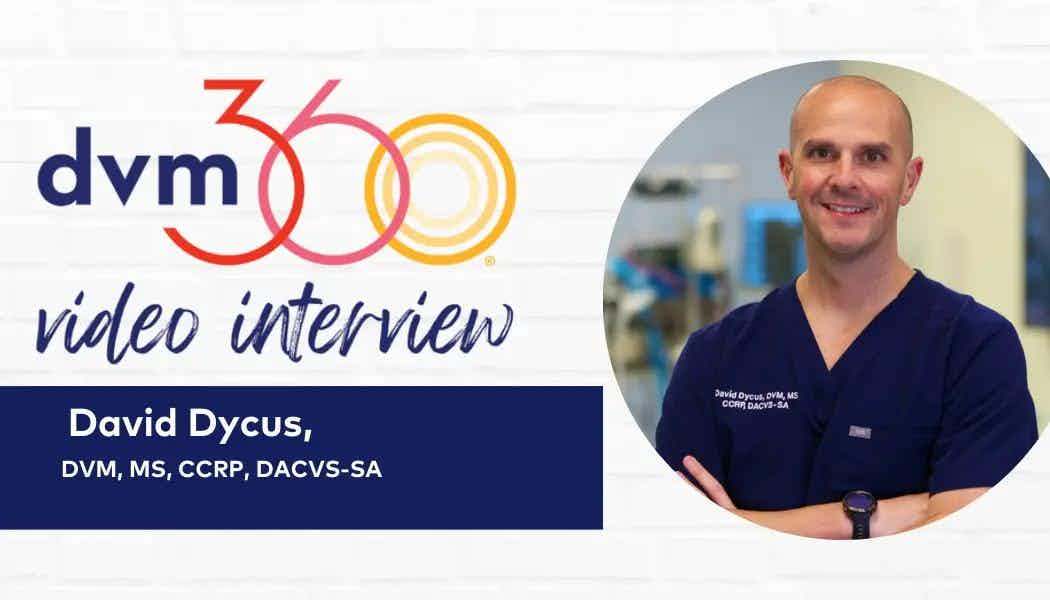Gait analysis of the horse (Proceedings)
Animal movement has been a subject of research for a long period of time. Both qualitative and quantitative gait analyses have been used to analyze horse and horse movement.
Animal movement has been a subject of research for a long period of time. Both qualitative and quantitative gait analyses have been used to analyze horse and horse movement. Veterinarians, breeders, owners, and trainers all can potentially benefit from the recent advances in gait analysis. Improved capabilities for data collection, storage, and analysis in combination with the advancements in personal computer technology have provided an opportunity for these analytical techniques to be utilized in the respective areas of interest. Currently these capabilities are only accessible at the institutional level, or they are so highly technical that its use is limited. New methodologies are being developed to provide these tools to the professionals who can utilize them.
Motion is the one common feature of all animals. Motion is a result of a combination of nerves stimulating muscle to move bone. Abnormal motion occurs when this chain of events is disrupted. Locomotion of an animal is described as its gait. The walk, trot, and gallop are three forms of gait. The walk and trot are symmetrical gaits. In this type of gait the movements of the right side mirror the movements of the left side. The gallop is an example of an asymmetrical gait, whereby the limbs of one side move in a different pattern then limbs on the other side.
It is important to understand normal and abnormal. Lameness is defined as a variance from normal gait. Soundness is a healthy musculoskeletal system. Unsoundness is an unhealthy musculoskeletal system. If the level of unsoundness is not great enough to alter the gait then an unsound horse may not exhibit lameness. It will alter how the forces are distributed throughout the body. This can result in a primary problem that goes unnoticed that leads to a secondary problem that exhibits as lameness. By not identifying the primary problem, a lameness can be treated, get better and then return. Gait analysis is a diagnostic tool that can be used to assess lameness.
The equine structure is divided into segments when analyzing motion. The axial vertebral column is made up of many joints and is divided into anatomical segments. The cranial segment is the head, followed caudally by the neck (cervical), thoracic, abdominal (lumbo-sacral), and tail. The appendicular segments are the front legs and the back legs. These are subdivided into smaller segments by the leg joints: shoulder, elbow, carpus, hip, stifle, tarsus & phalanges. Locomotion as a whole is a result of the individual movements of these segments. Gait analysis is used to assess the movement of each of the individual joints and how they affect locomotion.
Subjective gait analysis is the most common diagnostic tool to assess lameness. This should be done prior to any physical palpation. It starts by observing the animal while it is calm and resting, looking for conformational abnormalities or abnormal stances. For example, does the horse seem to hold one leg up or put most of its body weight on a particular leg. After these observations are noted the animal is analyzed while moving. The gait is a description of a particular series of leg and body movements used for locomotion. In the trot, one front leg and the contralateral rear leg are in support and that is followed by the other front leg and its' contralateral rear leg in support. This is the gait pattern that can give the best picture of abnormal gait. If one of the segments is impaired the gait will be out of balance.
The patient is observed moving in a straight line toward and then moving away from the clinician. Next it should be assessed moving in a straight line from the right side and then the left side. Then it should be observed moving in a circle, once clockwise then counter-clockwise.
Most gait abnormalities can be detected with subjective gait analysis. A horse with a lesion causing severe sharp constant pain will carry the limb and keep the weight off it. A dull aching pain will produce a limp during the gait analysis. A lesion that produces a small pain that occurs in certain phases of locomotion allows the horse to adjust their gait for relief. This altered gait can lead to subsequent orthopedic problems.
Quantitative gait analysis assigns numerical values to motion and includes the application of kinetics and kinematics. The force plate is an example of kinetic analysis being used to assess lameness. The numerical values of the ground reaction forces are used to determine variances of gait. Video analysis is used to assess the kinematic parameters of locomotion. With kinematic analysis, linear parameters of movement can be measured to assess horizontal and vertical motion. Also, angular parameters can measure the degrees of movement of the joints to analyze specific joint motion.
Veterinarians, trainers, and owners should be educated on the use of computer-assisted video gait analysis. The more information that is distributed the greater the potential to benefit from the knowledge gained about animal locomotion.










